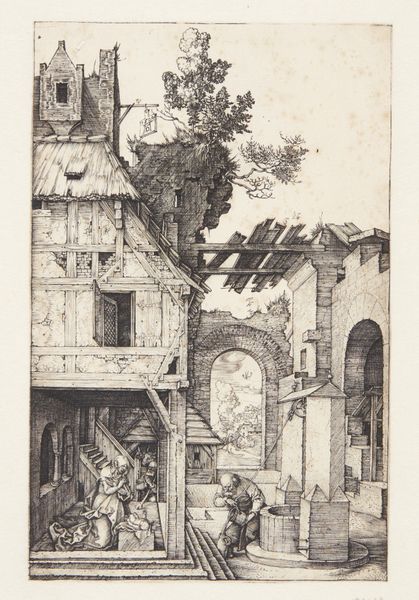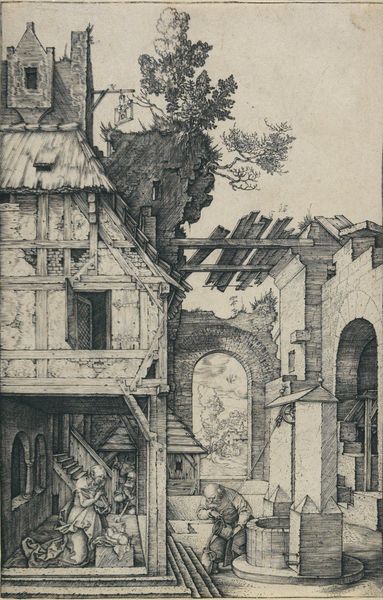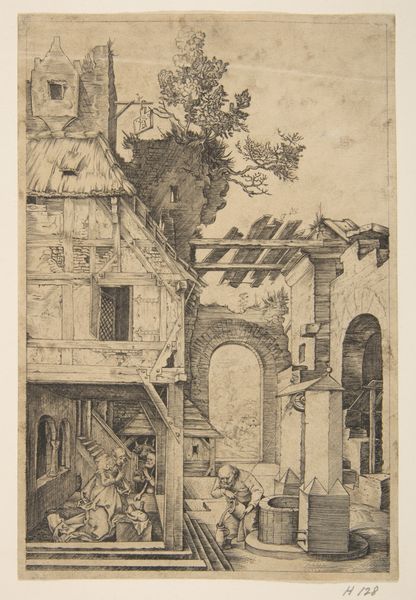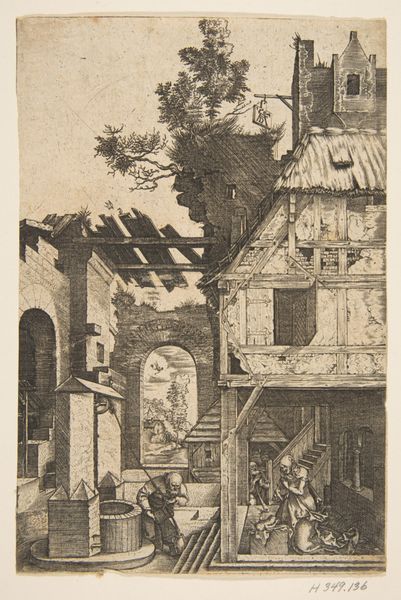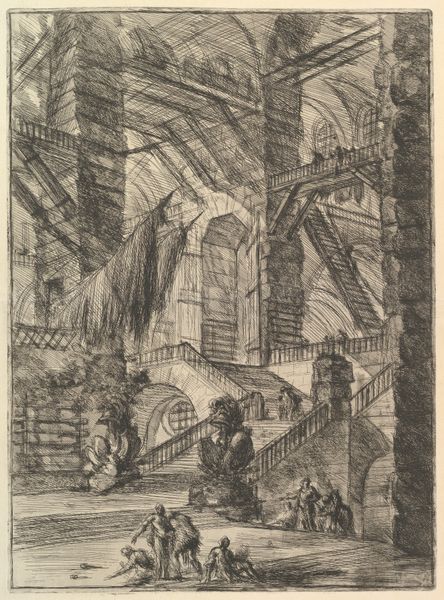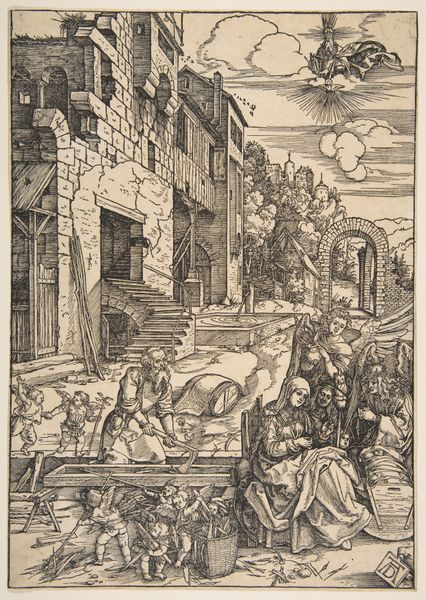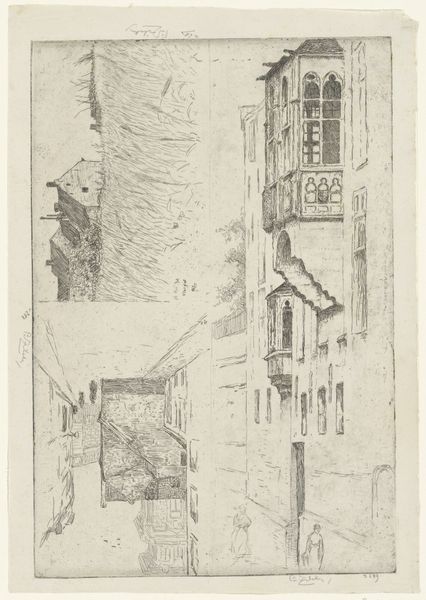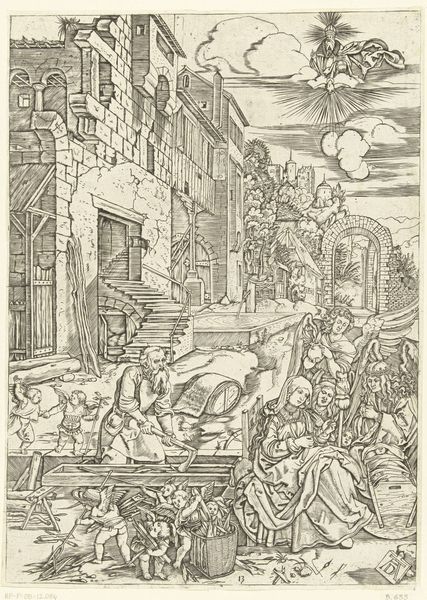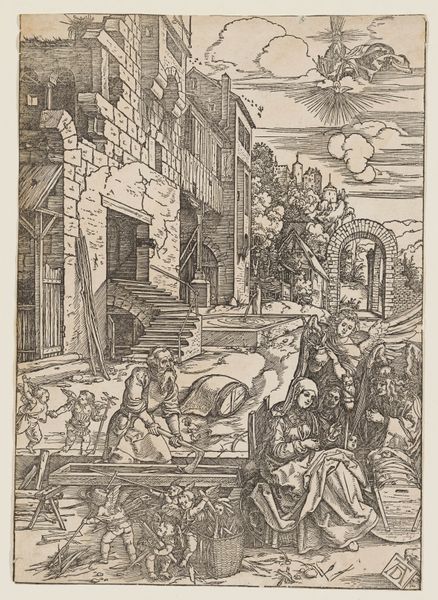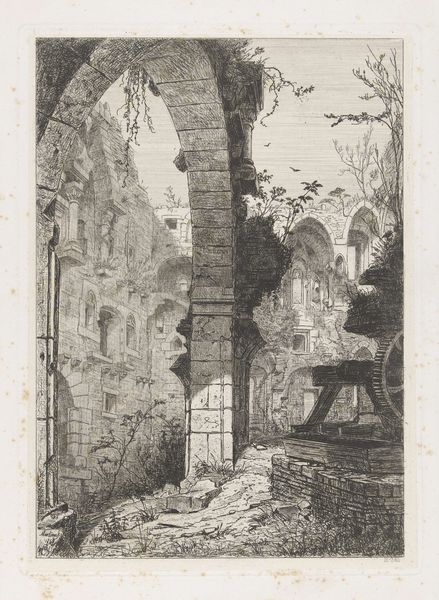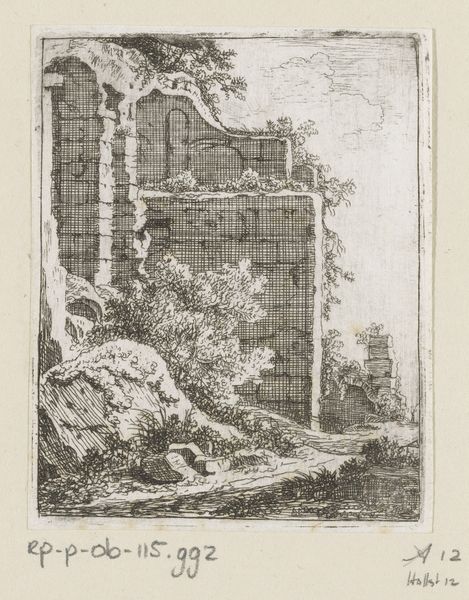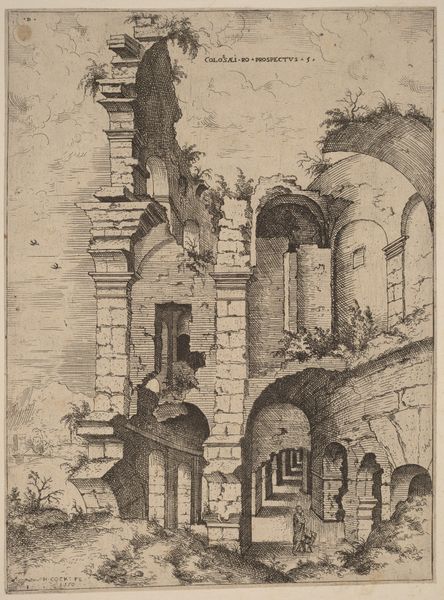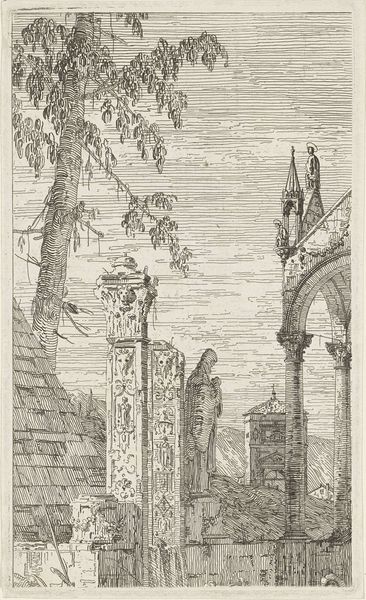
#
quirky sketch
#
mechanical pen drawing
#
pen sketch
#
old engraving style
#
sketch book
#
personal sketchbook
#
sketchwork
#
pen-ink sketch
#
pen work
#
sketchbook drawing
Dimensions: height 183 mm, width 119 mm
Copyright: Rijks Museum: Open Domain
Curator: At first glance, this print feels like looking into a secret world. The textures pull you in instantly; the sharp, intentional marks build this incredibly rich and complex scene. Editor: "De Geboorte van Christus," or "The Birth of Christ," created sometime between 1504 and 1566 by Wierix, which now calls the Rijksmuseum home. It is not what you would expect a Nativity to be, is it? Curator: Definitely not! I feel this almost uncanny mix of construction and ruin. There's so much architecture, a collapsing yet hopeful state of decay with that persistent tree growing out of a damaged wall. I’m pulled into its imperfection and fragility. Editor: It speaks to the instability and political turmoil of the era, particularly the Dutch Revolt against Spanish rule, perhaps. The image of birth and renewal set against a backdrop of ruin mirrors the anxieties and hopes of a society in transition. Think about the public who originally viewed it—it presented them the birth of Christ not as a static symbol of faith, but as an event deeply connected to the uncertainties of their everyday lives. Curator: Exactly. The birth of hope emerging from chaos. I mean, we can see the Nativity scene itself tucked almost out of view on the bottom left— overshadowed almost by the surrounding world— but it grounds it, that kernel of light amid decay. It is incredibly striking. Editor: I find that positioning significant. Wierix wasn't simply illustrating the Bible. He was crafting a political statement using the symbolism of religious imagery—almost subversive at the time. The placement challenges us to consider the real-world implications of the Nativity story, connecting spiritual renewal with the potential for societal change. Curator: Absolutely. Wierix took the old story and grounded it in very human, political concerns. I find that incredibly powerful. This little, unassuming print holds within it such great depths of commentary. Editor: Yes, and seeing how an event like that interacts with society then and still now, helps me better conceptualize what these things mean, and how history informs life, how political action shapes art and what these things tell me as an audience, now.
Comments
No comments
Be the first to comment and join the conversation on the ultimate creative platform.
